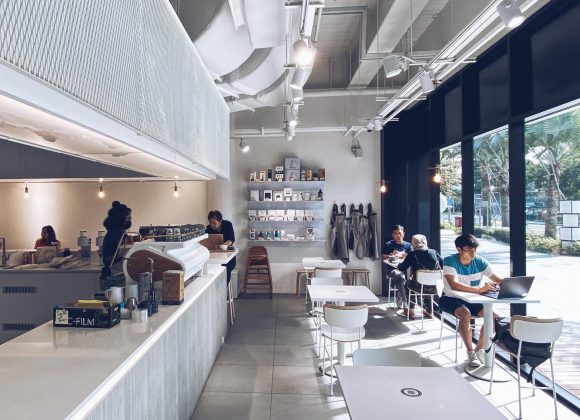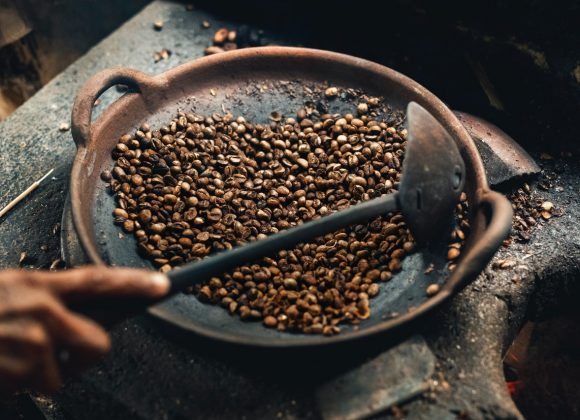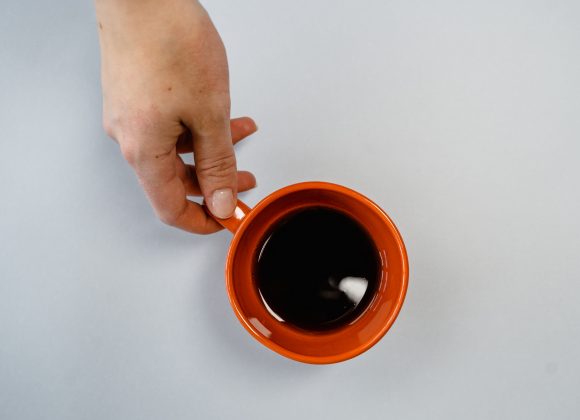Arabica coffee beans are renowned for their rich taste and exceptional quality. Most decent coffee shops will use Arabica beans to make various kinds of top notch coffee drinks such as espresso, latte, and cappuccino.
But did you know that there are several types of Arabica coffee? This plant has been around for hundreds of years, so it is no surprise that there exist multiple variations of it. The two most important Arabica coffee bean families are the Bourbon and Typica groups, and in this article we will delve a bit more into their interesting history.

Typica Group Lineage
Our story starts in Africa, more specifically Ethiopia. Coffee beans were transported from southwestern regions of Ethiopia and planted in Yemen. These coffee beans would later go on to be the forefathers of the Typica and Bourbon Arabica beans.
After centuries of cultivation in Yemen a few coffee trees were later shipped and grown in southern India. This gave rise to large coffee plantations in the Malabar region (present day Mysore).
The “real” roots of modern day Typica beans stem from when the Dutch shipped coffee seeds in the late 17th century from India to Batavia (present day Jakarta), which was a Dutch colony at the time. After years of difficulties introducing the plant to Batavia, the Dutch finally succeeded and grew a few Arabica coffee trees in the colony.
A single tree from Batavia would later be moved to Amsterdam (more specifically to their botanical gardens). This single tree gave rise to a new Typica variety (there are many Typica beans in the family), the variety that would later go on to thrive in Central and South American plantations.
From there, European powers will introduce the Typica coffee tree from the Amsterdam botanical gardens to different parts of the world. This includes Paris in 1714, Dutch Guiana (present day Suriname) in 1719, French Guiana in 1722, Martinique in 1723, northern Brazil in 1727, Jamaica in 1730, Santo Domingo in 1735, Cuba in 1748, southern Brazil in the 1760s, Costa Rica in 1779, and El Salvador in 1840.
Typica coffee would grow to be the dominant coffee bean variant in the Americas, but farmers started switching over to Bourbon varieties in the 1940s. This is because Typica coffee beans are very vulnerable to diseases and tend to have low yield rates. They are, however, still commonly planted in Jamaica, the Dominican Republic, and Peru.
Bourbon Group Lineage
Instead of India, the coffee beans from Yemen that would later on be known as Bourbon coffee beans were transported to Bourbon Island (present day Reunion Island) by the French. They attempted this a total of 3 times in 1708, 1715, and 1718 with varying degrees of success.
None of the 1708 batch survived, a very small number of the 1715 trees were successful, while only some of the 1718 batch thrived. They will remain on Bourbon island for more than 100 years until the midpoint of the 19th century.
Bourbon Arabica coffee beans later were primarily spread by French missionaries. Wherever they went for missions, they would bring with them and subsequently plant these Bourbon seeds. This resulted in Bourbon coffee trees being introduced to Zanzibar in 1859, Tanzania in 1862, and Kenya in 1893.
Coffee seedlings brought to Saint Austin (near Nairobi, Kenya) would also be given freely to any settlers who would like to grow them. This resulted in the massive growth of coffee plantations in the area, as well as the formation of the nickname “French Mission” coffee.
Bourbon seedlings later on will continue to spread around the world just like its Typica cousins. A notable introduction is when they were first brought to the Americas (more specifically Southern Brazil) in 1860. Since then, the Bourbon variety quickly became very popular among farmers in South and Central America. It is now the most grown Arabica coffee bean variety grown in the area.




